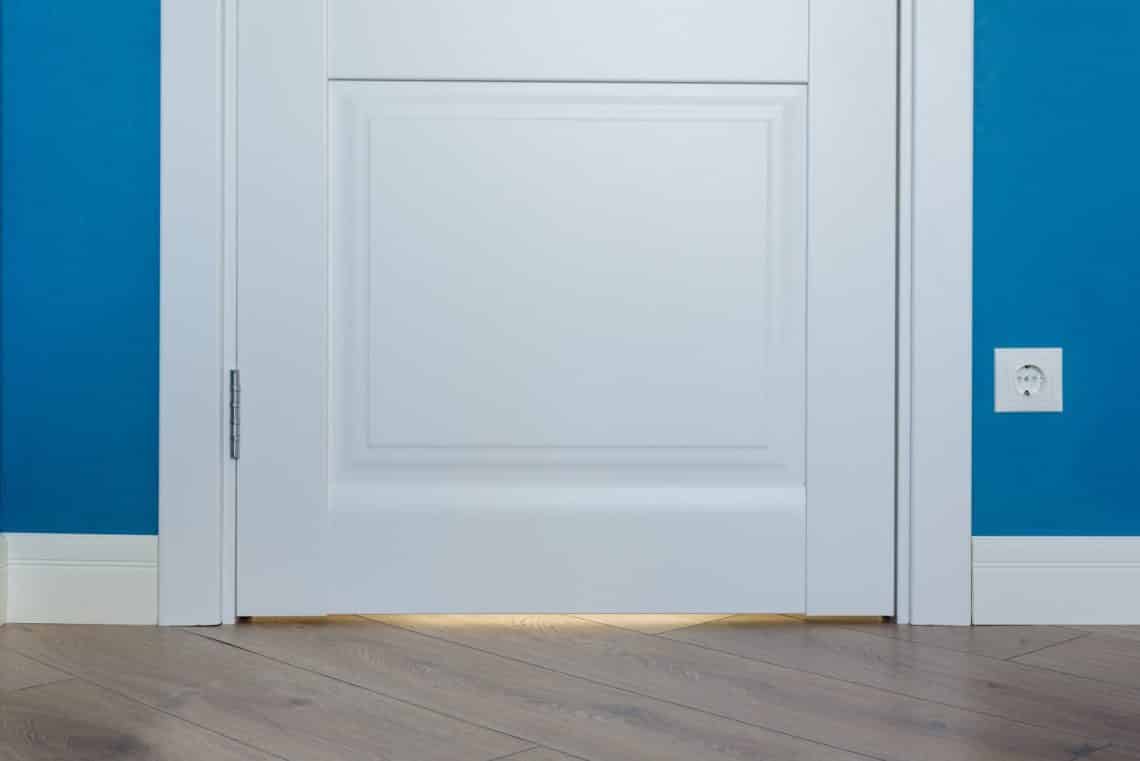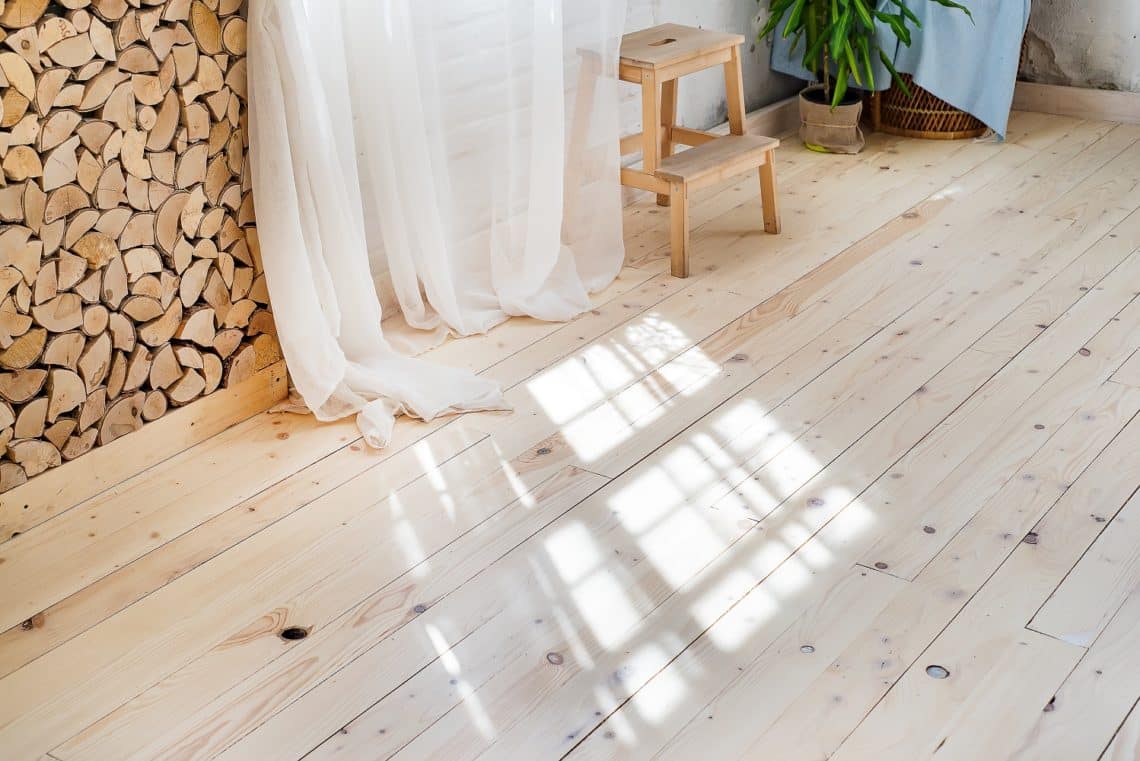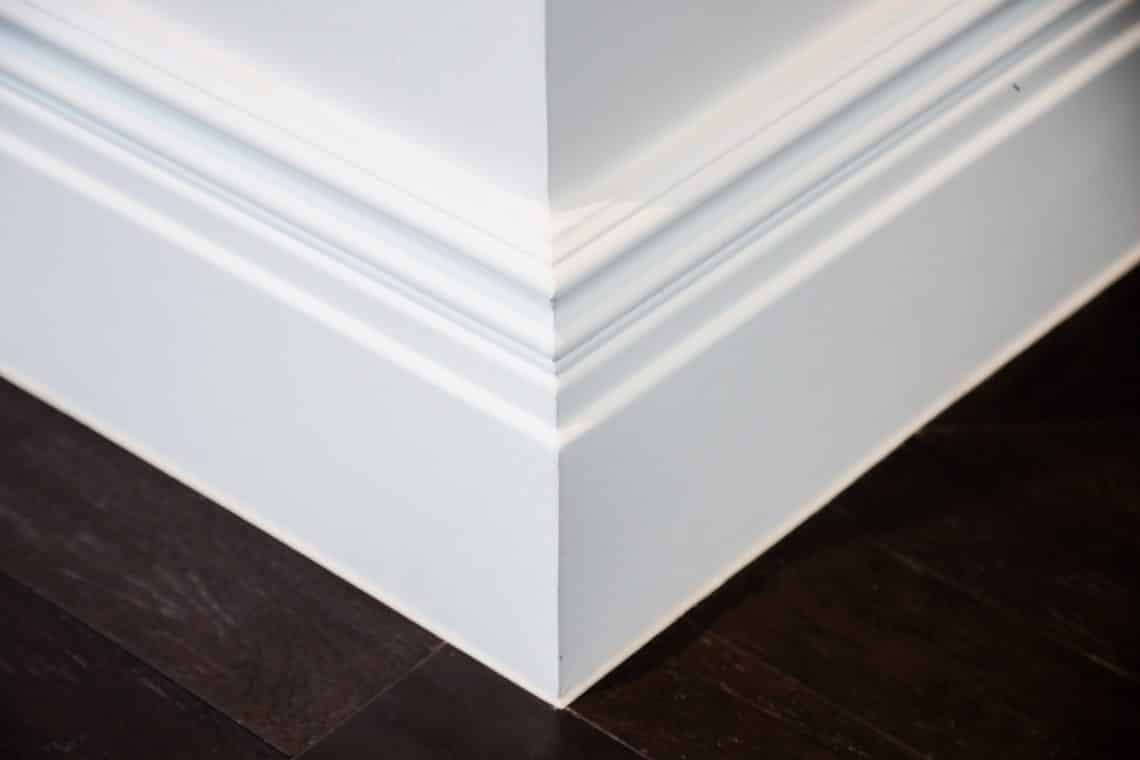Baseboards are vinyl or wooden boards that hide the joint between the floor and the wall. They cover the lowest part of an interior wall and are so much more than a mere extension of your home aesthetics.
Baseboards protect the walls from untimely damage caused by careless boot kicks, scratches from pets, and vacuum cleaner attachments. They also serve your aesthetic desires and make the edges of the wall last longer.
As there are two aspects to combine, we need to match the color of the floors with the baseboards. Aside from the colors, the textures should also be harmonious. The simplest forms of baseboards comprise a wooden plank glued to the wall.
In old homes, these planks are added with layers of moldings for aesthetic appeal. With the evolution of interior design and decoration, the design pattern of baseboards and architectural skirting has changed.
What Are Baseboards?
A baseboard is a narrow profile of wood or synthetic material affixed along the bottom of interior walls, providing both a decorative boundary between the wall and floor and protection against potential damage to the wall’s edge.
What is Architectural Skirting?
Architectural skirting, often synonymous with baseboards, refers to the broader category of decorative trims or moldings situated at the base of a wall. This can encompass a range of materials and designs, often tailored to complement the architectural aesthetics of larger commercial or ornate spaces.

If I Am Looking For The Perfect Baseboard, What Should I Look For?
James Dixon, the celebrated architect, restores Manhattan apartments and builds country houses. He finds the history of moldings fascinating.
He believes that all the different moldings of a room should be designed with overall harmony in mind. If you are looking for a mold for a room with a large ceiling, all the moldings of that room should belong to the same family and texture.
In other words, the baseboards should ideally fuse utility and aesthetics. As they endure a lot of injuries over time, the build material should be quite sturdy.
In the past, baseboards used to be less decorated than the crown moldings. However, today, all of them can be very simple. From a practical point of view, the more streamlined the mold is, the less dirt it collects.
So, when you are looking for baseboards, you should look for similar materials and textures as those of the other molds. Again, you have to find a material that can endure many hard blows.

Types Of Baseboard Material
As mentioned above, the selection of the baseboard material depends on its strength. Moreover, the texture of the other molds and the baseboard should be in tandem.
The following are the most commonly used materials for baseboards:
1. MDF [ Medium Density Fiberboard ]
MDF is the most widely used material for baseboard molding. It is a wood product that’s fused with wood fibers, resin, etc. This mixture makes the wood harder, and makers can shape it very quickly.
Its texture is more precise than wood, which makes it very easy to cut. If your budget is tight, you should consider MDF as a baseboard material.
Paint, mold, and design your baseboard any way you want. But keep in mind that despite being hardy, MDF doesn’t look good when stained.
2. Pine
As it is extracted from pine trees, this type of baseboard retains the feel, smell, and touch of real wood. Moreover, pine will suit all those who want the authenticity of wood despite having a tight budget as this is the least expensive of all woods. The major downside of pine, however, is its inconsistency. A molding made of pine wood may have some parts harder than others.
Our tip is that you should give a pine baseboard a coat of light paint. This will retain the woody appearance as well as the texture glowing under the color.
3. Oak
Harder and more consistent than pine, oak has a much higher ability to endure stains and heavy pressure. Albeit expensive, it can always be stained to match your floor texture.
The best part about using oak is that it’s readily available in all the hardware stores around you.
4. Vinyl
This is most commonly used in residential installations in basements and utility rooms. Vinyl baseboards come in rolls and are fixed tight with industrial glue.
This is also called PVC. Although PVC used to be associated with only pipes and plumbing, PVC is used as baseboard material, too. They are very hardy and remain unaffected by the elements.
Now you know the various kinds of materials used for baseboards. You can always have a combination of two or more types of materials, which will depend on the areas of your home in which you want to glue the baseboards.
Baseboard Styles And Designs
But what are the different styles and designs of baseboards? Let’s find out the various ways in which one can harmonize all the molds of a room. Each baseboard trim goes with a particular style of home.
These trim profiles do not have a particular set of names but are known by their dimensions. Here are the following:
1. Stepped Or Rounded Trim
This is the most common baseboard you will come across. The cut is usually 5/7 inches wide and 3 to 3.5 inches tall. The top is gently rounded or has a stepped shape so that it blends into the wall.
This cut suits a modern home the most. The signature of this trim is its simplicity as it doesn’t attract too much attention, making the crown molding stand out.
Prices of the trim depending on the material. For a decent quality stepped cut of oak, the cost ranges from USD 1.5 to 2 per foot.
2. Flat Base Molding
This is one versatile option for base molding. It suits almost any style of home and is relatively cheaper than the lustrous trims.
As the name suggests, this molding is flat on the front. Depending on its application, the thickness of the trim will vary. Most flat base molds are ⅝ inch thick, and their height varies from 3.5 to 4.5 inches.
Modern skirtings include a majority of flat base molding due to their natural fusion with different styles. You can always add a layer of another decorative mold to give the structure a distinct look.
This feature gives the flat base molds the flexibility to blend with any home style, be it Victorian houses or contemporary ones.
3. Sculpted Mid-Height Baseboard Trim
For those looking for something trendier, this trim should be your choice of the day. Its upper portion is shaped ornately and involves steps to blend with the wall.
The mid-height baseboard trim has a height ranging from 4 to 5 inches and has a thickness of ⅝ inch. The most significant downside of this trim is its cost. The material you use for the mold also makes a difference in the cost per foot of this trim style.
It suits houses that have a formal appearance and also matches any crown molding.
4. Sculpted Taller Baseboard Molding
When you want to make a visual statement with your baseboard, the sculpted taller baseboard should be your go-to. Its height ranges from 5 to 7 inches. The upper portion is carved with a particular design to make it visually appealing.
The width ranges from the standard ⅝ inch to 1 inch.
Because of its finish, this is the most expensive floor molding. The cost also depends on the height, design, shape, and type of material used for the trim.
High ceilings and grand homes ideally suit the taller trim. As the cut is high, it protects the walls from untimely and careless bruises by children and pets. The only downside is if you have elaborate crown molds as they won’t pair well with the high trim.

Should I Paint Or Stain The Baseboards?
This, again, depends on what part of the room you want to focus on. Consider the following factors before you decide to paint your baseboards:
1. Trim With Contrasting Paint
It looks good only in a large room, which has some pretty defined angles. As you paint your trim in a different color, the perimeter of the room will become more prominent.
2. Coordinating With Other Trims
It is also essential to coordinate the newly added trims with the rest of them in the home. You should also match the baseboard color with the existing door and window casings.
3. Considering The Trim Color
White is the most used color for painted trim, but it can also make dirt more noticeable. The bottom line is, always choose a high gloss and washable paint for your baseboards. They are going to get dirty over time.
Baseboards change the very essence of a room. Each kind of baseboard takes the eyes of an onlooker in a particular direction.
You will be amazed at how they can affect the entire look of a room. With all the information given above, make the perfect baseboard for all your rooms. Consider the various moods each room inspires, and renovate them accordingly.


